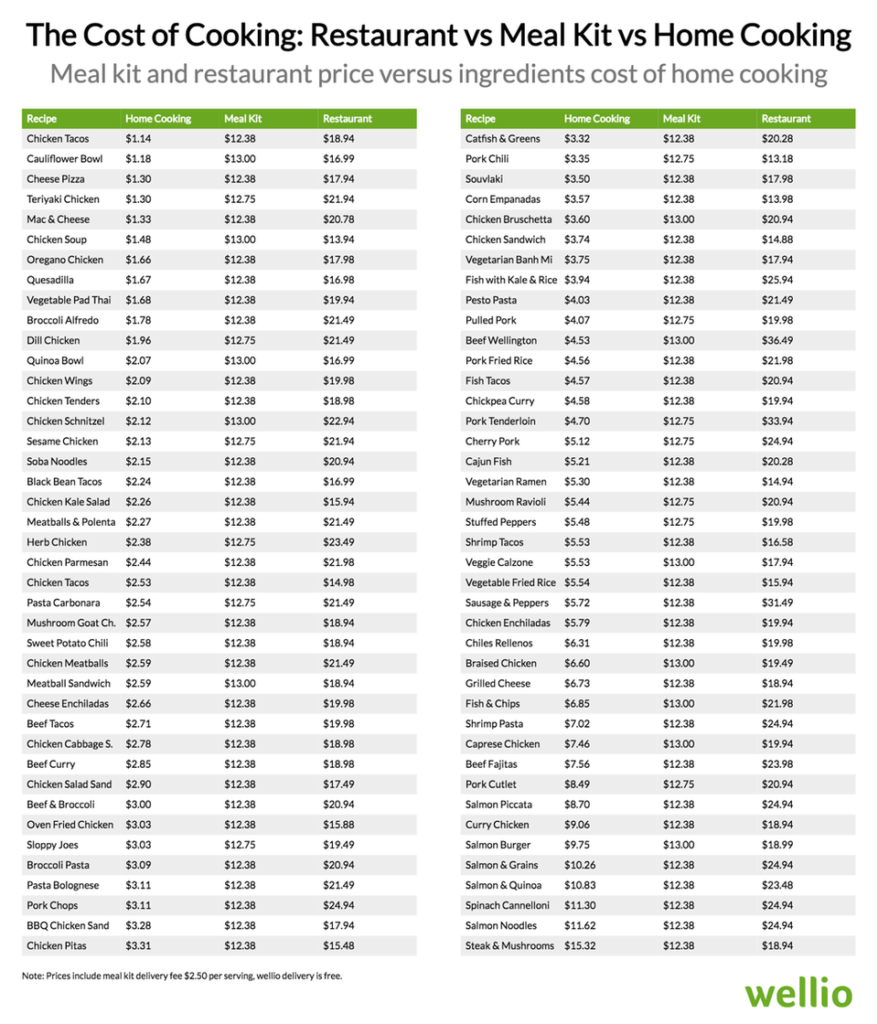14 Smart Ways to Save Money on Groceries
Our readers always come first
The content on DollarSprout includes links to our advertising partners. When you read our content and click on one of our partners’ links, and then decide to complete an offer — whether it’s downloading an app, opening an account, or some other action — we may earn a commission from that advertiser, at no extra cost to you.
Our ultimate goal is to educate and inform, not lure you into signing up for certain offers. Compensation from our partners may impact what products we cover and where they appear on the site, but does not have any impact on the objectivity of our reviews or advice.
It's so easy to go over budget on groceries, especially if you shop while you're tired and hungry. With a little planning and forethought, you can buy only what you need and learn how to save money on groceries.

Our mission at DollarSprout is to help readers improve their financial lives, and we regularly partner with companies that share that same vision. If a purchase or signup is made through one of our Partners’ links, we may receive compensation for the referral. Learn more here.
Groceries are a non-negotiable expense, but they’ve gotten noticeably more expensive in recent years.
According to NerdWallet, the average U.S. household now spends over $500 per month on groceries — and that’s just for food at home. In the eight years we’ve tracked prices for this guide, grocery spending has risen more than 30%, with inflation hitting everyday staples especially hard.
The good news? No matter your budget, there are still plenty of ways to save money on groceries — without sacrificing the meals you love.
Here are 14 practical, expert-backed strategies to help lower your grocery bill and stretch your food budget further.
Start by Planning Ahead
Believe it or not, some of the best things you can do to save money on groceries start before you even set foot in the store.
1. Use a grocery rewards app or browser extension
Grocery cash back apps are a great way to save money on food, and they’re super easy to use. Kroger, Food Lion, Albertsons — you name it.
With Pogo, you can earn automatic rewards at many of the most popular grocers in America by simply linking your card. On desktop, the free Pogo browser extension also helps you save by applying working coupon codes at checkout, so you never miss a discount. You can even earn bonus points by answering short surveys or allowing passive location tracking — which adds up over time.
Once you reach just $3 in earnings, you can cash out directly to PayPal or Venmo — no confusing points systems or gimmicks.
Pro Tip: If you’re responsible with credit, adding a cash back credit card with robust grocery savings can help you further boost your savings.
2. Plan your meals
If you’ve ever had the experience of standing hungry in front of an open fridge with a random assortment of ingredients on a weeknight, then you’ll love meal planning.
Before you go grocery shopping, take 15 minutes to sit down and look at your grocery store’s ads. You can find most grocery ads and discounts online. Plan out your meals for the week so you know exactly what ingredients to get ahead of time.
This way, you’ll never have that frustrating fridge experience again. You also won’t waste any more food as it goes bad, and you’ll save money by avoiding take-out when you run out of options.
Related: 74 Ways to Save Money on a Tight Budget
3. Make a list
If you’ve already planned out your meals, the next part is easy — make a list. Having a list in hand keeps you on track when you go to the grocery store and prevents you from forgetting your ingredients.
Even if you only need a small handful of items, it’s still a good idea to make a list. You can make a list on an old-fashioned piece of paper or use the dozens of list apps available on smartphones.
4. Pick the right time
You’ve probably heard people say you shouldn’t go grocery shopping while hungry because you’re more likely to spend money. But did you know going grocery shopping while sleepy can also prompt you to spend more money?[2]
Try going shopping after you’ve had a full meal and a good night of sleep.
Related: 7 Experts Share Their Best Hacks for Saving Money
How to Save Money on Groceries at the Store
Once you get to the store, there are plenty of ways to do your grocery shopping on a budget.
5. Have your groceries delivered
This might not be a money-saving tip for everyone, but in some cases, it can be a lifesaver. If you’re easily tempted to throw treats and snacks into your cart, opting to use a grocery delivery service will remove that bait.

Similarly, if you always forget to plan out your meals and make a list before you go grocery shopping, having your groceries delivered might force you to do these things. Otherwise, how will you know which groceries to get?
You can use meal delivery services that your own grocery store offers, or services such as Instacart. Many stores even offer grocery pickup services, such as Kroger’s ClickList, where someone picks out your order and you pick it up. That may be a cheaper alternative to having groceries delivered.
6. Consider paying with cash
It’s been proven — paying with a credit card makes you likely to spend more, whereas paying in cash has the opposite effect.[3] Researchers theorize this is because paying with credit cards distances you from the reality of paying with cold, hard cash.
So the next time you shop, consider stopping by the ATM beforehand.
7. Join the store loyalty program
Most store loyalty programs are free and easy to sign up for. In return, you’ll get discounted prices on a range of items with no work on your part aside from scanning your loyalty card or entering your phone number. Some grocery store loyalty programs even offer discounts on fuel at the co-branded gas station.
8. Shop the sales
Every week, grocery stores have sales on specific items. These are often in-season items that can be especially fresh and tasty. You can use grocery store sales to vary your weekly menu by planning your meals around discounted items. You can also use it as a challenge to try new ingredients and recipes.
9. Buy generic food items
As with prescription drugs, generic food items are often much, much cheaper. While you may be loyal to a certain brand, you’ll often be surprised by how good the generic version is.
It’s at least worth trying a few times to see if you can wean yourself over to the cheaper product. If you do like the generic version, you’ll save money each time you buy it — especially for routine staples like pasta, spices, and cereal.
10. Don’t forget about coupons
Coupons are one of the oldest and best-known ways to save money on groceries. There are tons of places to find coupons.
Lots of people just stuff coupons randomly on doorway entry tables or in their cars, forgetting them when they actually need them. But if you actually learn how to coupon and create a solid couponing strategy, not only will you be more likely to remember your coupons, you’ll be more likely to use them to the maximum advantage. Pair up a coupon with a sale on the same item for twice the savings.
Related: 11 Best Shopping Apps to Score Epic Savings
11. Ask for a rain check
One of the core tenets of budget grocery shopping is buying food that’s on sale. But what happens if they run out? That doesn’t mean you’re out of luck. In fact, you can ask for a “rain check.” You’ll usually get a slip of paper that lets you buy the item later, when it’s back in stock, at the sale price.
Related: Should You Marry a Spender If You’re a Saver?
How to Save Money on Food at Home
The savings don’t stop once you’ve bought your groceries and left the store. There are a lot of things you can do at home to stretch the value of what you’ve already purchased.
12. Batch and freeze meals
If you hate cooking or don’t have time to make a full-course gourmet dinner each night, batching and freezing your meals might be just the thing for you.
The best way to maximize your savings in this area is to plan your meals around what’s on sale. That way, you can enjoy the fruits of your savings over and over again, well past when the sale has ended.
13. Shop your freezer and pantry
Even though it can be frustrating to find nothing but two bags of pasta, a can of peanut butter, and three taco shells in your pantry, you can choose to view it as a challenge.
What can you concoct out of your kitchen based on only the ingredients you already have available, Top Chef-style? Make it a fun date with your spouse or challenge your kids.
14. Avoid pre-cooked meals
It’s easy to buy pre-cooked meals and ready-made deli items. But you can save money by buying the raw ingredients instead. The taste of home-cooked food always beats out pre-cooked food, and you’ll be learning a new skill as well.
Learning to cook can be fun. There are many free classes available online, like this knife skills one. That’s the first step toward learning to cook at home. You can also take cooking classes online or in-person.
Look for kitchen supply stores in your area if there aren’t any cooking schools nearby. Pinterest is a great place to find new recipes when you’re ready to start experimenting.
Make Grocery Shopping on a Budget Fun
Saving money on groceries doesn’t have to be a drag. You don’t have to resign yourself to a life of cheap ramen and processed cheese.
Here are some ways you can make creating a food budget more fun:
- Track how much money you’re saving
- Have meal-planning competitions with your spouse to see who can save more (while still planning a tasty menu)
- Have your kids help with planning, shopping, and cooking
No matter which way you slice it, finding ways to save on your groceries will help your bottom line and leave more money for your other financial goals and things you really care about.









